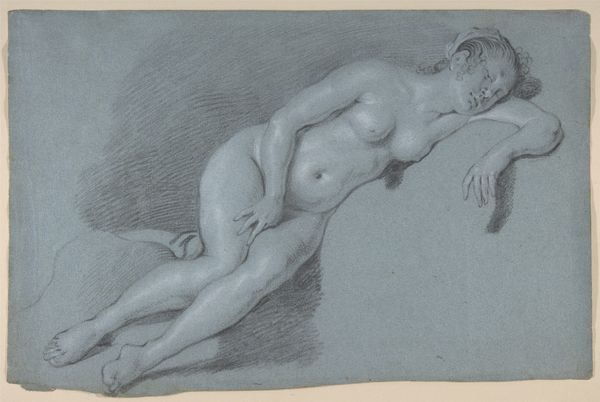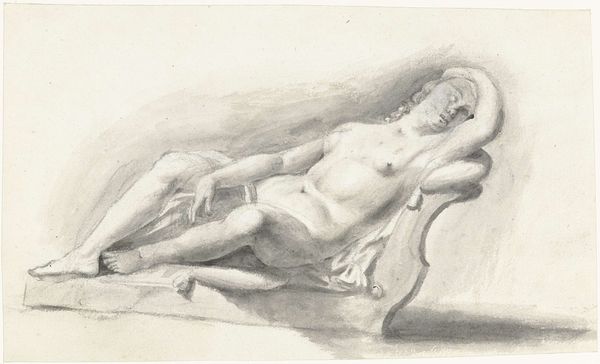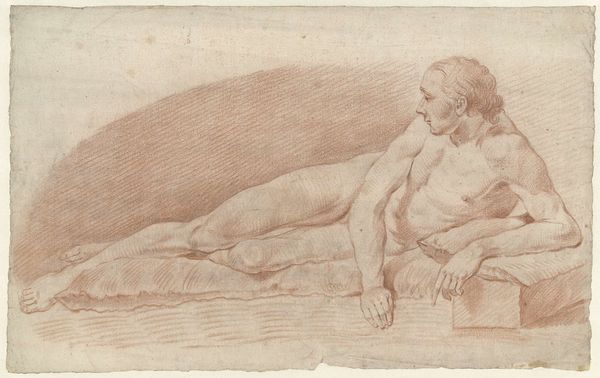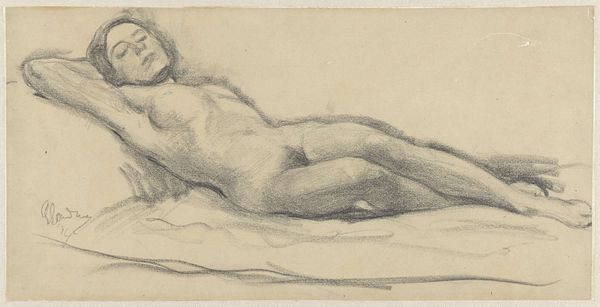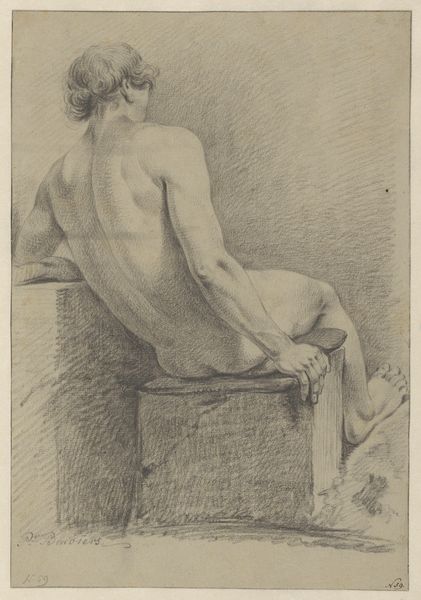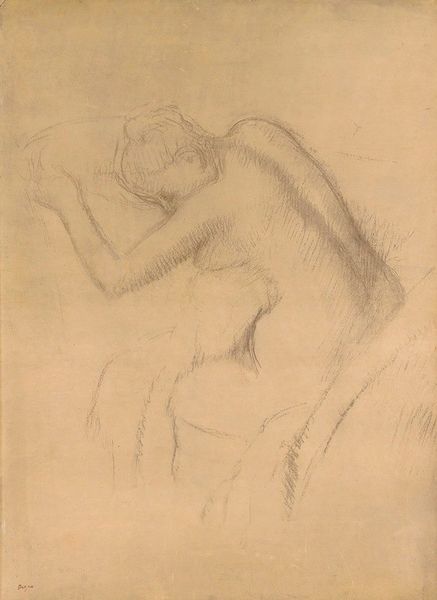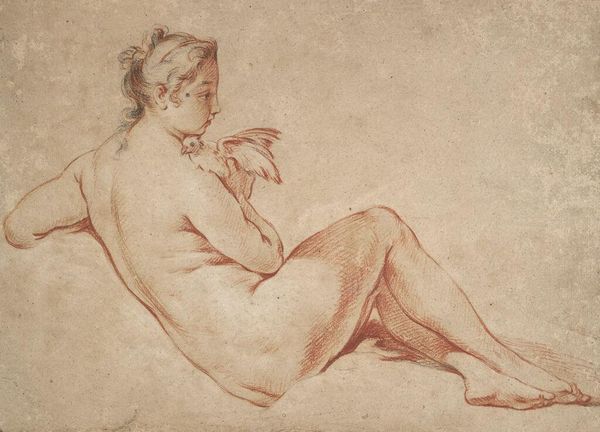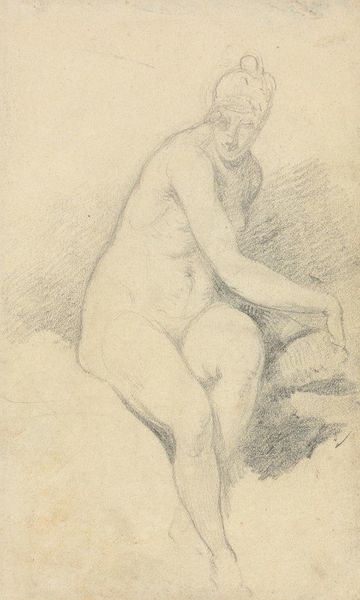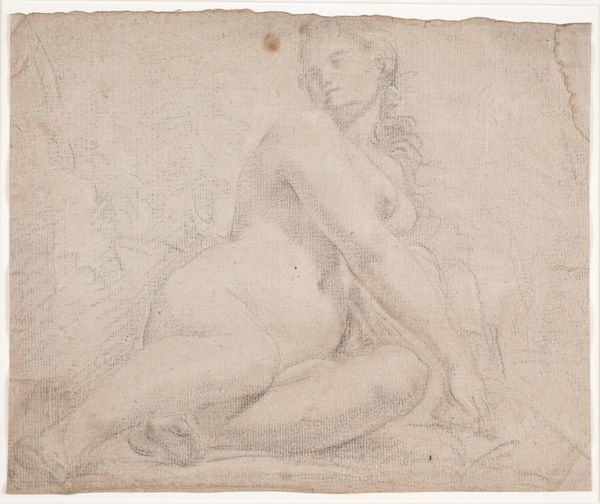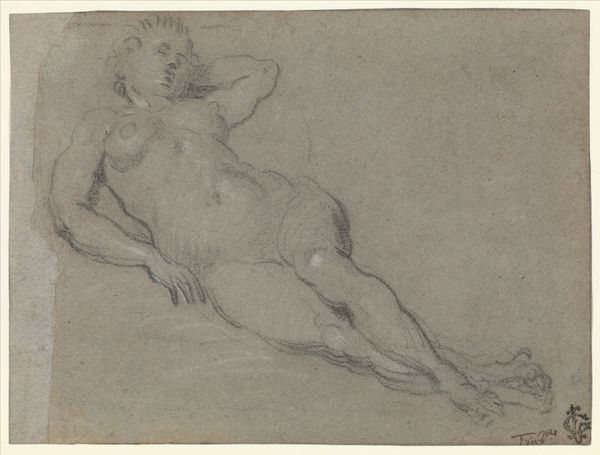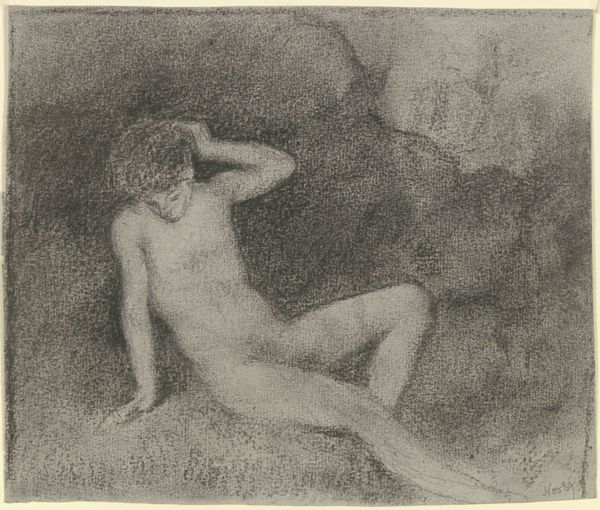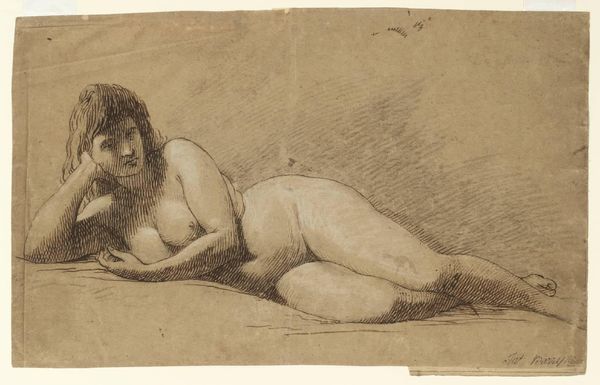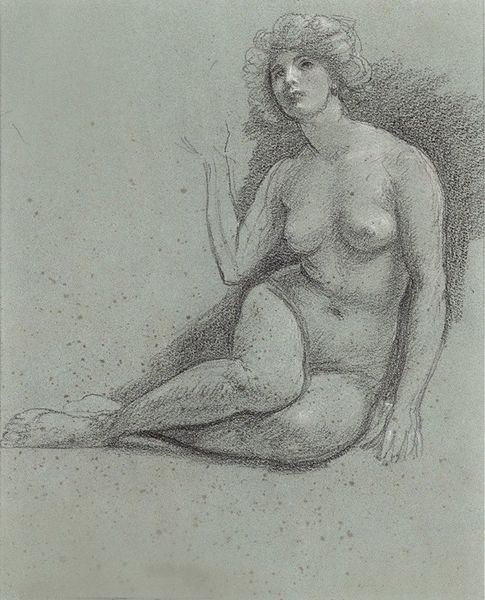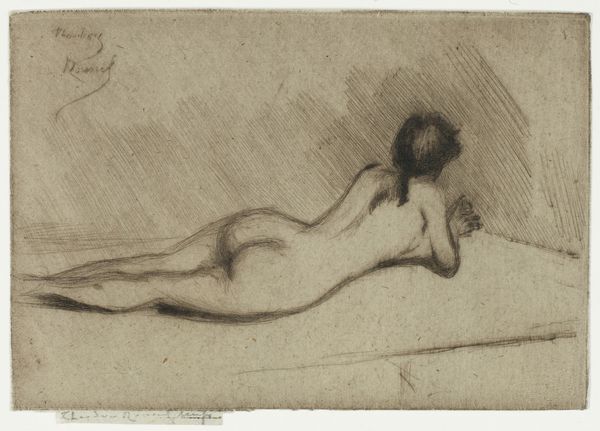
drawing, paper, charcoal
#
drawing
#
self-portrait
#
baroque
#
dutch-golden-age
#
pencil sketch
#
charcoal drawing
#
figuration
#
paper
#
pencil drawing
#
genre-painting
#
charcoal
#
nude
Dimensions: height 240 mm, width 390 mm
Copyright: Rijks Museum: Open Domain
Editor: This drawing, "Zittend vrouwelijk naakt, op de rug gezien," or "Seated Female Nude, Seen From the Back," created in 1643 by Govert Flinck, captures a nude figure with charcoal and pencil on paper. It's striking how vulnerable and strong the figure seems simultaneously. How do you interpret this work? Curator: It’s compelling, isn’t it? The symbolism is rich. Nudes often embody ideas of truth and beauty, drawing from classical ideals. In the Dutch Golden Age, however, they could also carry moral weight. Consider how Flinck presents her *back*. What does hiding the face signify here, culturally? Editor: Perhaps the lack of a face depersonalizes the image? I mean, it shifts the focus to form and light. Curator: Precisely! The back, then, becomes a landscape onto which viewers project. This woman, anonymous, becomes an "everywoman," a mirror. Flinck utilizes chiaroscuro masterfully – that contrast between light and dark. Light emphasizes the spine's curve, the vulnerability of the neck. This could be symbolic of societal expectations versus a personal, internal sense of being. Do you see visual connections with memory, perhaps personal struggles translated onto a body? Editor: That makes sense! Now that you mention it, the pose, the soft shadows... it evokes a quiet sense of introspection. Curator: Yes. There’s cultural memory here. The nude links to historical traditions but reframes it. Flinck uses visual symbols – the body, the pose, the lack of distinct features – to negotiate Dutch society’s changing values. These shift as society considers personal identity and struggles. Editor: I see it now. It's like she embodies universal experiences through this anonymous figure. Thanks! Curator: It’s a potent reminder of how symbols carry meaning, even centuries later, showing we participate in ongoing cultural conversations when viewing works of art.
Comments
No comments
Be the first to comment and join the conversation on the ultimate creative platform.
